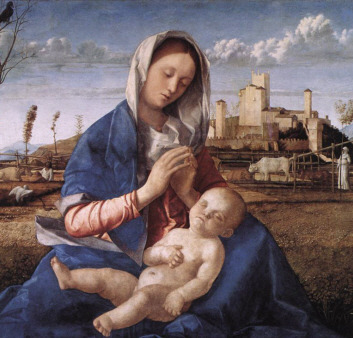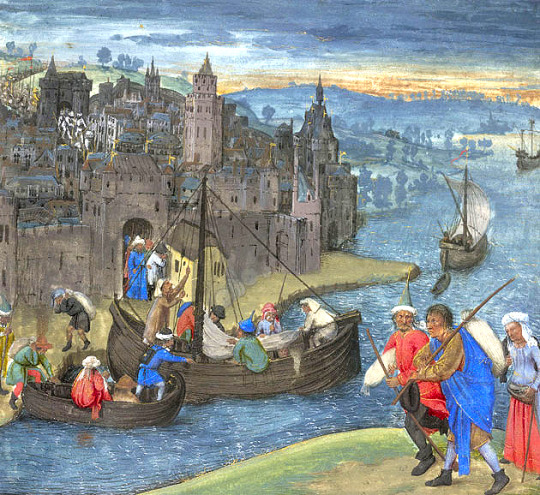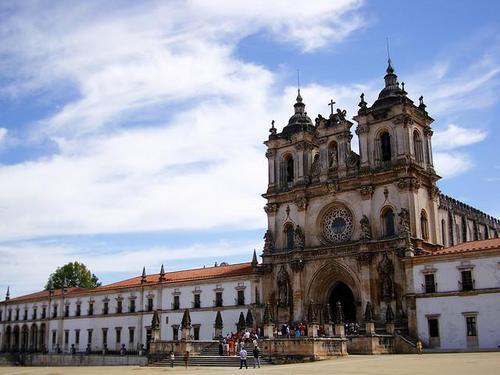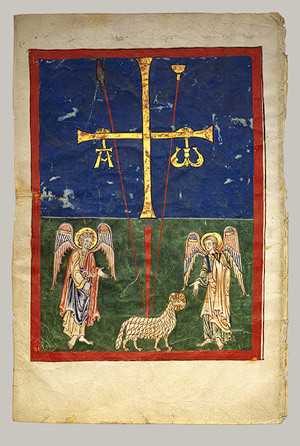#mcuhistory
Explore tagged Tumblr posts
Text

"He Snapped… And So Did Our Hearts." 💔✨
This wasn’t just the end of a battle. It was the end of a legacy, a journey, and a man who carried the weight of the universe on a metal heart.
"I am Iron Man." Four words that rewrote destiny… and wrecked millions of fans in a single moment. Tony Stark didn’t just save the world—he became it. If you didn’t cry during this scene, check your arc reactor. You might not have a heart.
👉 Watch the scene that changed cinematic history forever: 🔗 https://urlhub.pro/7a558f
#IronManForever#TonyStark#IAmIronMan#AvengersEndgame#MCULegend#RobertDowneyJr#MarvelTears#EndgameFinalSnap#EmotionalScene#MarvelFandom#MCUHistory#InfinityStones#TumblrViral#MarvelMoments#StarkSacrifice#AvengersAssemble
0 notes
Text

May the real Captain Marvel step up... oh fine it's Billy Batson. But Walter Lawson is Marvel's real Captain Mar-Vell. Everyone else... yikes...
#cosmichero#marvelcomics#marvell#marvellegends#marveluniverse#starforce#marvelheroes#quantumbands#spacehero#captainmarvell#negabands#cosmicpowers#kreewarrior#marvelfan#heroofthestars#kreeempire#classicmarvel#originalcaptainmarvel#superherolegend#mcucomics#kreevsskrull#comicsarelife#cosmicavenger#skrullwar#superherohistory#binarypowers#captainmarvellegacy#mculore#kreetech#mcuhistory
0 notes
Photo

As seen in the picture it is obvious there are a group of angry women who have taking up arms, which is a rarity in France for women to take up arms, and they are marching to Versailles. As i observe the picture, there seems to be no sight of men anywhere in that crowd. This event of this painting is taking place in 1789 which is in the years that the french revolution had begun. The painting seems to be from The Granger Collection of New York. I am not exactly certain as to who came up or drew this picture. I believe the person who had came up with this picture did it because it showed how the whole french nation even , which is made up of mostly the common people, rose up and fought for a just society including the women of the nation as well. It did not matter if you were a child, women or man, everyone participated in the revolution somehow. This picture tells us that culture of the common people, or the common women in this case, that they were all united together as a group no matter of what part of France they were in. Judging from their appearance, they do seem to be common people. It also seems that the culture is that when a whole group of people, the peasants in this case, get into a conflict or fight for a cause, the whole peasant community follows one another into that conflict they are fighting against.
Jose Alvarez
History 101
spring 2014
http://www.britannica.com/EBchecked/topic/219315/French-Revolution
1 note
·
View note
Text
Saint Charles Borromeo


The Image above shows 'an image of a statue of Saint Charles Borromeo, an Italian Cardinal in the Catholic Church during the counter-reformation. The second picture is a picture of Saint Charles Borromeo himself. Saint Charles Borromeo was the cardinal archbishop of Milan reigning from 1564-1584. He lived during the reformation as a reformer in the 16th century. Saint Borromeo along with Saint Ignatius Loyola, Saint Philip Neri, etc "led the movement to combat the inroads of the Protestant Reformation". He was a significant leader and a leading figure of reformation of the Catholic Church. Saint Borromeo is made a saint in the Catholic Church and November 4th is called the feast day to remember Saint Charles Borromeo.
Bibliography: http://en.wikipedia.org/wiki/Charles_Borromeo
http://www.pitts.emory.edu/dia/detail.cfm?ID=111103
Christiady Hutama, HIS 100
1 note
·
View note
Text
Join the WAC

The picture was created, along with others, to get women to join the WAC. The WAC is Women's Army Corp. It tells the women that it is their war too. And by doing that, it gives the women a sense of responsibility to their country. They want women to join the war instead of just staying home and doing nothing.
Lori Willard, HIS275, Fall 2013
0 notes
Photo

Wolfgang Musculus (1497- 1563) was a French theologian of the Reformation. He was very passionate about singing, knowledge, and languages. He served as deacon for seventeen years to the Cathedral Lady of Strasbourg. After his service he left to become a professor of theology at Bern.
http://www.pitts.emory.edu
0 notes
Text
St. Benedicts Rule

Madonna in the meadow by Giovanni Bellini
CHAPTER 36 : Of the Sick Brethren Before and above all things, care must be taken of the sick, that they be served in very truth as Christ is served; because He hath said, "I was sick and you visited Me" (Mt 25:36). And "As long as you did it to one of these My least brethren, you did it to Me" (Mt 25:40). But let the sick themselves also consider that they are served for the honor of God, and let them not grieve their brethren who serve them by unnecessary demands. These must, however, be patiently borne with, because from such as these a more bountiful reward is gained. Let the Abbot's greatest concern, therefore, be that they suffer no neglect.
Let a cell be set apart for the sick brethren, and a God-fearing, diligent, and careful attendant be appointed to serve them. Let the use of the bath be offered to the sick as often as it is useful, but let it be granted more rarely to the healthy and especially the young. Thus also let the use of meat be granted to the sick and to the very weak for their recovery. But when they have been restored let them all abstain from meat in the usual manner.
But let the Abbot exercise the utmost care that the sick are not neglected by the Cellarer or the attendants, because whatever his disciples do amiss falleth back on him.
0 notes
Photo

This artifact was called a alabastron. It was used for carrying things like oil and liquid substances. They were usually made out of alabaster which is where the name originated from. Overtime the Alabastron went through many changes that would alter the look and function of the piece. They would use gold-band glass like the one pictured above for higher end pieces. This would be a precursor to the production of Roman gold-glass vessels.
Eric Duzian
http://www.metmuseum.org/toah/works-of-art/17.194.286
1 note
·
View note
Photo

In the 11th century towns started to because of their geographical locations and how much trade they could bring in. As you can see in this picture; A town with access to the water had a much greater advantage due to the fact that it can import different things from different countries via boat. Many cities grew off trade and it gave craftsmen and other skilled workers a chance to showcase their products directly to the public. Towns also offered an enclosed space with walls that physically kept danger out and people safe. There was a rather large religious landscape that played an important role in the beginning of towns as well. Friars who would preach to the people in the town became essential to the spiritually practiced in the town.
http://www.bl.uk/learning/histcitizen/medieval/towns/medievaltowns.html
Eric Duzian HIS 100
0 notes
Text
The Peasant Strike of 1299
” having heard a complaint of the communities of divers counties, for that servants, ploughmen, carters, threshers, and other their servants refuse to serve about the services for which they were accustomed to serve, on account of the fertility of the present year”

This picture is taken from Irish history of peasants in the medieval 13th century. In 1295, famine spread as the people's crops experience bad harvest because of the bad weather. In 1299, the harvest and crops were very good and demand for work increased (as seen in the picture). This caused the peasants to demand higher wages and better terms in how many days they have to work. A peasant usually works at a fixed rate and has to work a specific number of days for the land that they rent. The peasants saw this as an opportunity to strike and get better wages as well as better terms for their working days. In 1299, the parliament ended the strike in giving punishment to any peasant who fought back.
The picture illustrates peasants enjoying themselves in 1299 because of the good harvest and higher demand of work. The peasantry farmers must work a number of days for the land that they rented and they usually work for a fixed rate. The peasants are hard working people who are lowest in the medieval hierarchy structure.
Christiady Hutama, HIS 100
Bibliography: http://irishhistorypodcast.ie/2012/09/05/the-peasant-strike-of-1299/
0 notes
Photo

The image I chose gives an accurate depiction of what peasant life was like back in the Medieval times (1000-1400). It shows peasants working out on the fields doing different tasks like farming the crops and other activites. They can be seen carrying large mounds of hay in the background by horse on a cart. There seems to be a small village on left side in the background where the peasants probably live and sleep. Then there is a castle far in the back which indicates that these peasants served a king and they would farm crops for the castle.
Eric Duzian, HIS 100, Fall 2013
http://www.bl.uk/learning/histcitizen/medieval/rural/rurallife.html
0 notes
Text
Alobaca Monastery

The Alobaca is a Roman Catholic Monastery built during the early 13th century. It is located currently in the town of Alcobaça, in central Portugal. The Monastery is founded in 1153 pertaining as a present to Bernard of Clairvaux. The first Portuguese king named Afonso Henriques celebrated his authority and also promote his victory over the Moors in March 1147. The monks started to inhabit the monastery in 1223, and it was completed in 1252. The monks lived there and are dedicated to their religious lives; producing illuminated manuscripts in a scriptorium.
In the middle ages, the Alobaca monastery became an important and powerful presence in Portugal and is filled with agricultural interiors and exteriors. The exterior has a two plain style wings with the church in the middle and uses a gothic architecture. The interior is mainly of French origin.
The Alobaca Monastery is one of the most important historical sites of today and visited tourist attraction. It was listed by UNESCO as a World Heritage Site in 1989.
Christiady Hutama, HIS100
Bibliography: http://www.touropia.com/explore/portugal/alcobaca_monastery/
http://en.wikipedia.org/wiki/Alcobaça_Monastery
0 notes
Text
Extra Credit

Illustrating the compiled visionary texts in about 776 by the Asturian monk Beatus of Lièbana, a Beatus manuscript consists of passages from the Book of Revelation accompanied by interpretations cast as Christian allegories. These leaves comes from a Beatus manuscript disassembled in the 1870s. Other parts of the manuscript are divided among museums and libraries in Spain.
The manuscript is notable for its vibrant, dramatic color contrasts and the linear treatment of the figures and draperies. The illustrations, occasionally quite literal interpretations of the texts, partially reflect the earlier Mozarabic tradition of manuscript illumination. The banded backgrounds and certain architectural details also reflect this style.
Extra credit
Barbara Jauregui
http://en.wikipedia.org/wiki/Morgan_Beatus
0 notes
Text
The man above is Ignatius of Loyola. the father of Jesuits. The Jesuits were part of the religious order that went across Europe to start schools, colleges, seminars, and etc. Ignatius had a crazy youth. He came from a noble family and was spoiled. He had everything such as women, money, constant partying, and etc. He loved to gamble, was a knight and had big dreams about his knighthood. His conversion to Christianity occurred during a battle with the french in which he was greatly wounded. He survived but was really close to death; he had to walk with a limp for the rest of his life. As he spent his days recovering, he began to read about Jesus and became very interested in his story. He eventually joined the religious order; and just like other monks, left his old life behind. He let go all of his luxuries to follow God. Loyola’s greatest contribution to the order was starting the Society of Jesus (Jesuits) which was a group that educated people all throughout Europe. They created many colleges and school because education was important to the Jesuits.
http://en.wikipedia.org/wiki/Ignatius_of_Loyola#Religious_conversion_and_religious_life
http://norprov.org/spirituality/lifeofignatius.htm
http://www.ignatianspirituality.com/ignatian-voices/st-ignatius-loyola/
http://en.wikipedia.org/wiki/Society_of_Jesus
Jonathan Chacon
i just noticed i posted on my page instead of yours so sorry for the lateness
0 notes
Quote
CHAPTER I Of the Kinds or the Life of Monks It is well known that there are four kinds of monks. The first kind is that of Cenobites, that is, the monastic, who live under a rule and an Abbot. The second kind is that of Anchorites, or Hermits, that is, of those who, no longer in the first fervor of their conversion, but taught by long monastic practice and the help of many brethren, have already learned to fight against the devil; and going forth from the rank of their brethren well trained for single combat in the desert, they are able, with the help of God, to cope single-handed without the help of others, against the vices of the flesh and evil thoughts. "But a third and most vile class of monks is that of Sarabaites, who have been tried by no rule under the hand of a master, as gold is tried in the fire (cf Prov 27:21); but, soft as lead, and still keeping faith with the world by their works, they are known to belie God by their tonsure. Living in two's and three's, or even singly, without a shepherd, enclosed, not in the Lord's sheepfold, but in their own, the gratification of their desires is law unto them; because what they choose to do they call holy, but what they dislike they hold to be unlawful. But the fourth class of monks is that called Landlopers, who keep going their whole life long from one province to another, staying three or four days at a time in different cells as guests. Always roving and never settled, they indulge their passions and the cravings of their appetite, and are in every way worse than the Sarabaites. It is better to pass all these over in silence than to speak of their most wretched life. Therefore, passing these over, let us go on with the help of God to lay down a rule for that most valiant kind of monks, the Cenobites."
St. Benedict included the particular injunction because it explains the life of each different monk and how they live their lives different from each other. Each monk has a different role in the community and therefore it is important that each one has his own guidelines to follow. For example , " The first kind is that of Cenobites, that is, the monastic, who live under a rule and an Abbot." As opposed to the second kind of monk which is the hermit monk. The hermit monks or , Anchorites, have learned to fight the battle against the devil and do not needs god's help. The third class of monks are the Sarabaites, who usually lives groups of two's or three's travel without a shepherd. They are more indulged with the law as opposed to worshipping the lord all the time. The last class of monks are the land lopers. They usually travel from place to place not really spending time in one place all the time. They are considered the worst of the monks
0 notes